

Biology. Chemistry. Fahrenheit. Thermometer with Fahrenheit and Celsius units Fahrenheit (symbol°F) is a temperature scale based on one proposed in 1724 by the physicist Daniel Gabriel Fahrenheit (1686–1736), after whom the scale is named.[1] On Fahrenheit's original scale the lower defining point was the lowest temperature to which he could reproducibly cool brine (defining 0 degrees), while the highest was that of the average human core body temperature (defining 100 degrees).
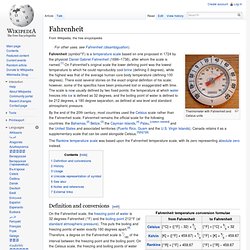
There exist several stories on the exact original definition of his scale; however, some of the specifics have been presumed lost or exaggerated with time. The scale is now usually defined by two fixed points: the temperature at which water freezes into ice is defined as 32 degrees, and the boiling point of water is defined to be 212 degrees, a 180 degree separation, as defined at sea level and standard atmospheric pressure.
Publications Index. Boston Dynamics Videos. Teacher Resources. Please ensure you have JavaScript enabled in your browser.
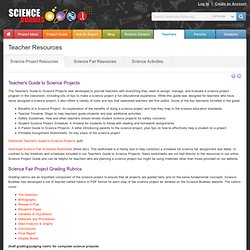
If you leave JavaScript disabled, you will only access a portion of the content we are providing. <a href="/science-fair-projects/javascript_help.php">Here's how. </a> Teacher's Guide to Science Projects The Teacher's Guide to Science Projects was developed to provide teachers with everything they need to assign, manage, and evaluate a science project program in the classroom, including lots of tips to make a science project a fun educational experience. Benefits of a Science Project: An explanation of the benefits of doing a science project and how they map to the science education standards. Download Teacher's Guide to Science Projects (pdf) Download Science Fair Schedule Worksheet (Word doc): This worksheet is a handy tool to help construct a schedule for science fair assignment due dates.
Science Fair Project Grading Rubrics Other Classroom Resources Success Stories from Teachers and Students Sign-Up for a Free Science Newsletter. Welcome to Discovery Education. The Scientific Method: A Blended Learning Lesson. This fall, I’ve transitioned into using project-based learning (PBL) as the core instructional model in my classroom.
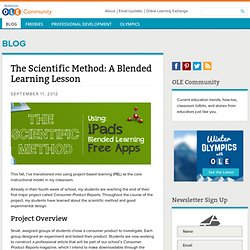
Already in their fourth week of school, my students are reaching the end of their first major project called Consumer Product Reports. Throughout the course of the project, my students have learned about the scientific method and good experimental design. Project Overview Small, assigned groups of students chose a consumer product to investigate. Each group designed an experiment and tested their product. While my students have learned critical science content through completion of this project, they have also developed 21st century skills. Brainstorming Tool: QuickVoice App for iPad Before I allowed my students time to independently start their project, I organized a small-group brainstorming session for each of my assigned groups. Before getting to work, students followed a brainstorming protocol that helped get the ideas flowing.
Research. Future - Science & Environment - Best of the web: Planets, pandemics and power. Enjoy the pick of the week’s science and technology stories from around the web, as selected by Bob Trevelyan, editor of The Browser.
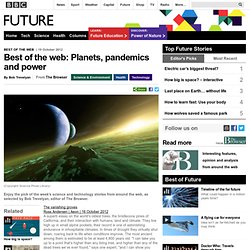
The vanishing groves Ross Andersen | Aeon | 16 October 2012 A superb essay on the world's oldest trees, the bristlecone pines of California, and their interaction with humans, land and climate. They live high up in small alpine pockets; their record is one of astonishing endurance in inhospitable climates. In times of drought they virtually shut down, roaring back to life when conditions improve. The most ancient among them is estimated to be at least 4,800 years old. "I can take you up to a point that’s higher than any living tree, and higher than any of the dead trees we’ve ever found," says one expert, "and I can show you where, two years ago, I found a little foot-high bristlecone pine growing.
"
Sea-level rise from polar ice melt finally quantified. 29 November 2012Last updated at 15:22 ET By David Shukman Science editor, BBC News Channels like this one can feed water down through hundreds of metres of ice Melting of polar ice sheets has added 11mm to global sea levels over the past two decades, according to the most definitive assessment so far.
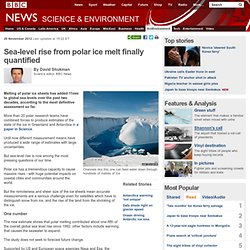
More than 20 polar research teams have combined forces to produce estimates of the state of the ice in Greenland and Antarctica in a paper in Science. Until now different measurement means have produced a wide range of estimates with large uncertainties. But sea-level rise is now among the most pressing questions of our time. Polar ice has a tremendous capacity to cause massive rises - with huge potential impacts on coastal cities and communities around the world.